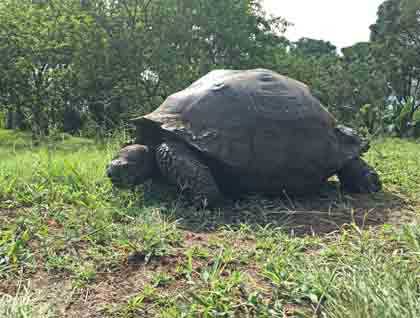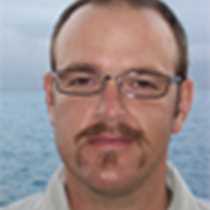What an incredible change we encountered as we stepped upon Santa Cruz Island and found humans going about their island lifestyle. Puerto Ayora is the largest populated town in Galapagos with approximately 20,000 people calling this home. This town also home to the National Park Administration center and the Charles Darwin Research Station, with both institutions working hand in hand for conservation within the archipelago. We visited the research station to obtain in depth information about the restoration projects. There are advances being made in endemic plant habitat rebuilding in damaged areas and also scientists are trying to find solutions for invasive species.
Giant tortoises are also an integral part of the work that is being done here, with programs in rearing and breading in captivity being presented to us as we observed giant tortoises and learned about their history. After an interesting visit focusing on the scientific aspect of Galapagos’ protection, we are let free to wander among the “locals”. Charles Darwin Avenue has a great deal to offer to visitors, however the local fisherman’s dock is the main highlight with the catch of the day being cut into filets. Brown pelicans are synchronized in their movements as the fisherman move back and forth and a potbellied Galapagos sea lion waits patiently for the fisherman to turn his back so he may run away with a bit of the catch.
After we meet in town we are off to the “highlands” of Santa Cruz and we immediately feel a drop of a degree or two in the ambient temperature. We stopped at a local farm on our way to lunch and we gained insight into the “locals” lifestyle as we were able to try their products. Shade grown Arabica coffee, raw sugar, fresh cheese, and “Aguardiente” are tried by many. The makeshift backcountry still for the fermented sugar cane juice is rustic but effective. The highlands also present us with an incredible lunch at “Narwhal” restaurant, a local restaurant owned and operated by Evelina and Eduardo Donoso who have lived for over thirty years in this paradise.
After our hearty lunch we continue to explore this part of Galapagos that is only found on the higher parts of the major islands. Local farmers have changed their business of farming to one of showcasing the wildlife that is present, and we proceed to visit one of these former farms. As we walked deeper into the fields we found a double decker lava tube and understood the power of nature and how it creates and destroys.
Giant tortoises pass through this area during their yearly migration from the lowlands to the highlands all the while reproducing. These antediluvian creatures pass slowly among us giving all a hint of their life and how it developed in this secluded location. As the sun dipped below the horizon we marveled at the interaction we have with the amazing creatures here on earth.







